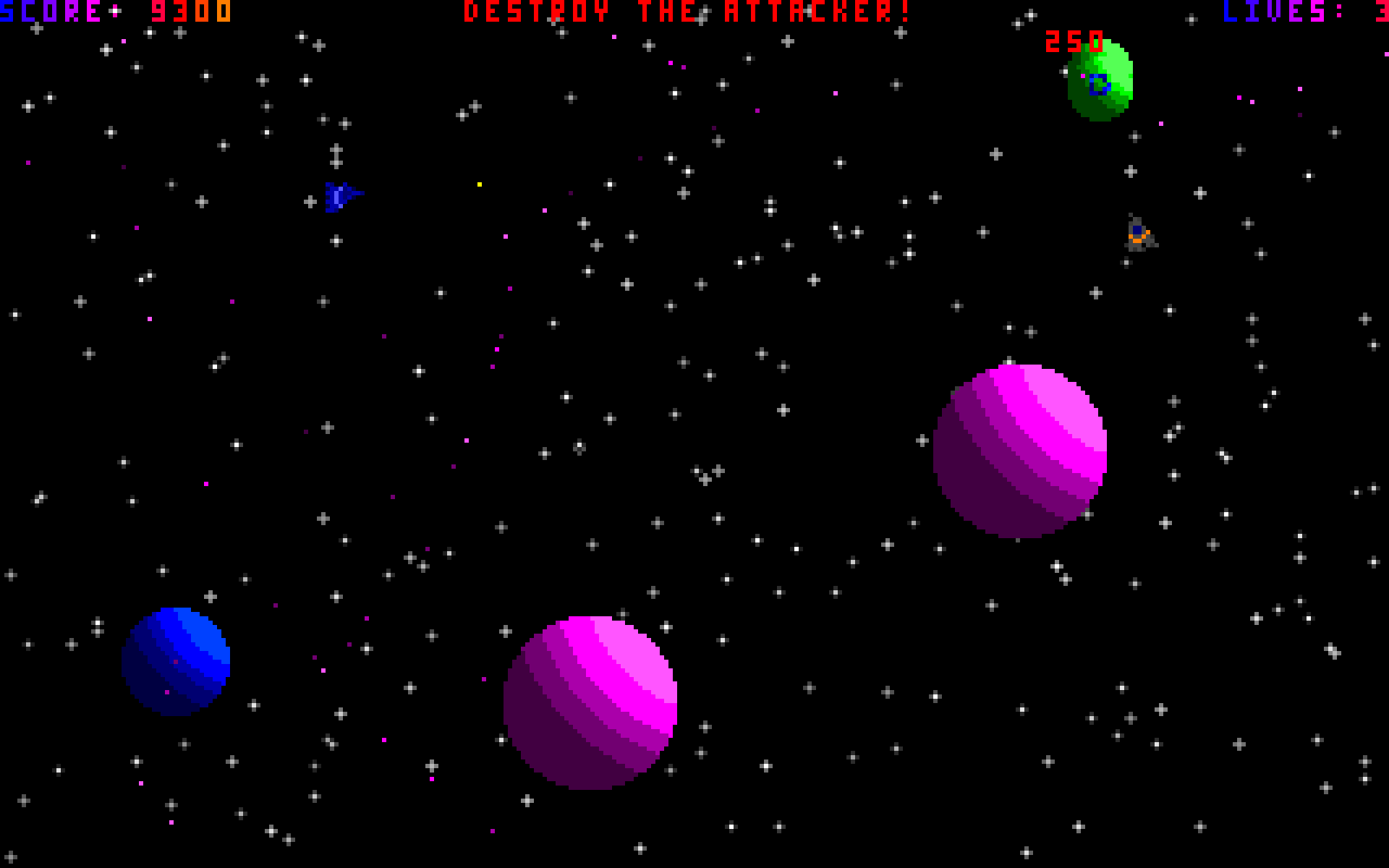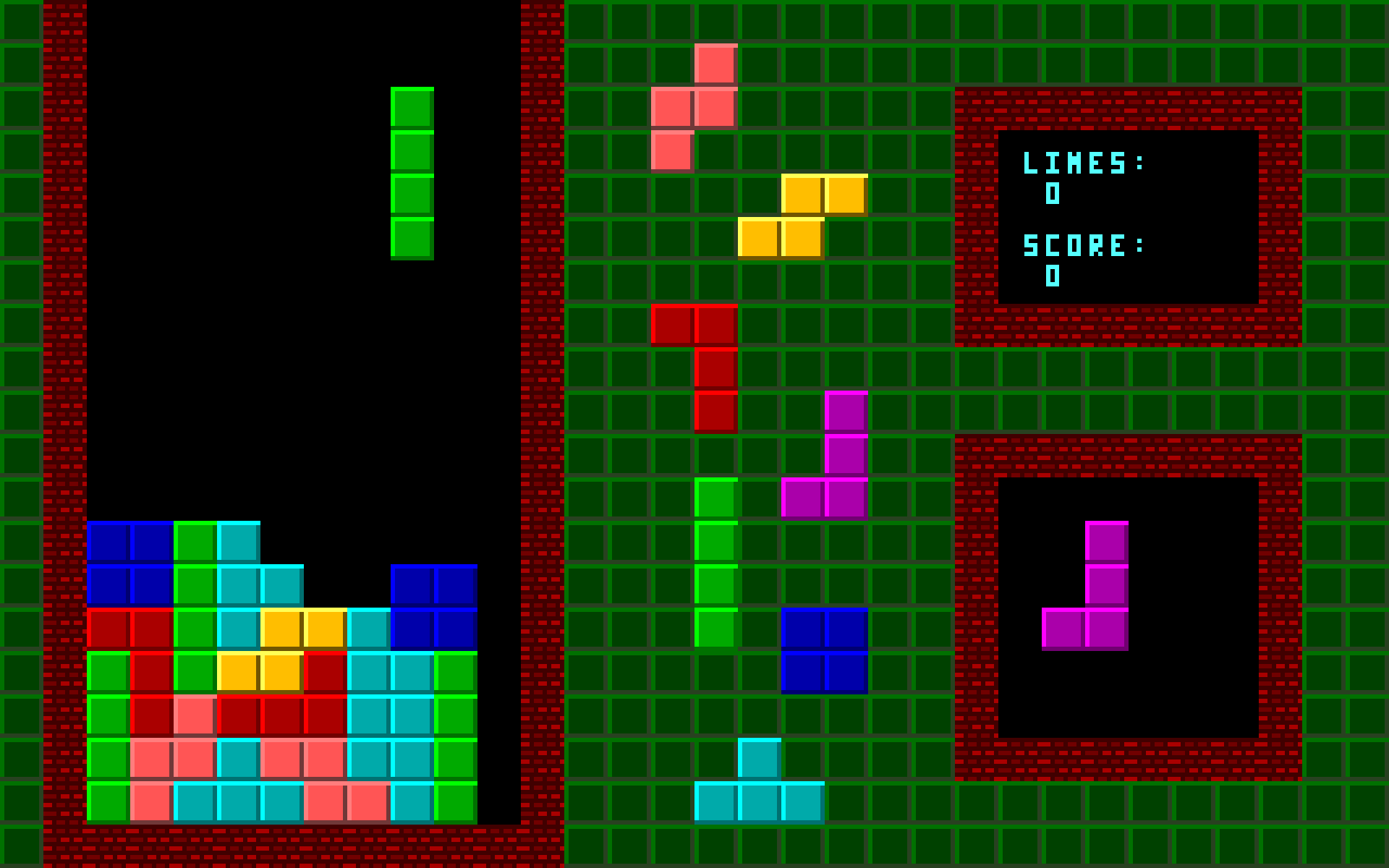This repository comprises a handful of arcade games I wrote in Turbo Pascal during high school. The source code is shown exactly as it was found on a 20-year-old floppy disk. Also included is some rudimentary tooling I wrote in BASIC for drawing sprites and levels with a mouse.
The following sections offer the original descriptions of each game, as well as screenshots for a few of them.
Just like in Asteroids from the 70's, you move around in a little spaceship amidst many...well...asteroids (they're called spacerocks in this game). Every time you shoot a spacerock, it breaks into smaller spacerocks, and you repeat the process until the field is clear. For the first few rounds, the number of spacerocks you start out with increases. Throughout the game you are periodically attacked by UFOs who are capable of destroying you or stealing points by destroying the spacerocks themselves. This is probably the most animated game I ever made. It also features sound effects that you can turn on or off.
The title says it all: it's Pong, and I made it. I guess the most noticeable thing about this game is its depth. To start off, there are three ways to play: practice, normal and soccer mode. In practice mode, you play with only the left paddle, and you bounce the ball(s) against a net on the right that you can move forward and backward. Normal mode is pretty standard Pong, and in soccer mode, each player has an offense and defense paddle to make things more interesting. You can play with just one ball, or all the way up to 50 (which I don't recommend). You can also change who controls the left and right paddles—a human or three levels of AI. So you can play against a friend, the computer, or better yet you can watch the computer play itself (team up a fast AI with a slow AI and see what I mean). This game was pretty popular; I'm guessing because there are so many ways you can play it.
I'll be honest; this Pac Man clone is pretty simple and I didn't put much time into it (one week). The ghosts aren't very smart, it's easy to get stuck on walls, and the game doesn't really go anywhere (but then again, the original Pac Man didn't either). Nevertheless, it has some cool features and I feel it's worth showcasing here. It keeps track of your score and there are two different types of pills to help fight the ghosts.
With Escape, my goal was to duplicate Jeff-Pong's popularity by giving the player lots to choose from. Escape is modeled after the old arcade game where you use a paddle and bouncing ball to destroy an array of bricks. There are 25 levels to beat...some are pretty standard, while many have their own twists that will take some time to work around. The game also keeps track of what levels you've beaten and a best time for each. You can play against the clock, and you can control the speed of the ball. The game features cool animation, sound effects, and was my only game to offer mouse support.
This one is my version of Tetris. It's a quick and simple yet well-rounded little game, complete with a scoring system (for single lines, double lines, triple lines, and a "fallout"). The colorful game screen shows your score and a heads-up display for the upcoming piece. When you're at the title screen, you can use the "+" and "-" keys on the number pad to throw in or take away junk in the playing area to add some excitement. This game didn't take long to make, but is pretty fun nonetheless.


